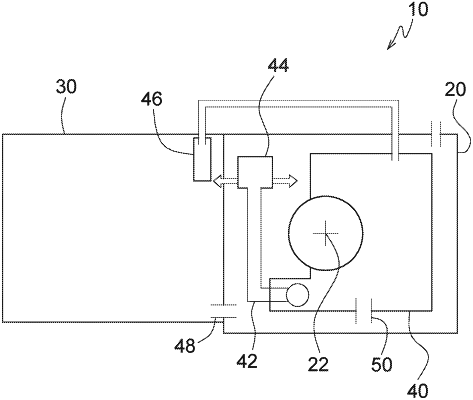| CPC F16H 57/0424 (2013.01) [F16H 57/037 (2013.01); F16H 57/0436 (2013.01); F16H 57/0445 (2013.01); F16H 57/0483 (2013.01); F16H 2057/02013 (2013.01); F16H 2057/02043 (2013.01)] | 20 Claims |

|
1. An oil management system for a vehicle, comprising:
a differential housing;
a transmission housing;
a lubricant tank;
a suction line;
a lubricant pump; and
an air suction pump;
wherein the transmission housing is connected to the differential housing in an air-tight manner and a lubricant through-passage is defined between the transmission housing and the differential housing;
wherein the lubricant tank is provided in the differential housing and comprises a lubricant suction opening in a lower region, the lubricant pump conveying lubricant from the lubricant tank through the suction line and conducting the lubricant to the lubrication points in the differential housing and the transmission housing;
wherein the air suction pump pumps air from the lubricant tank into the transmission housing so that an excess air pressure is maintained in the transmission housing and the differential housing is at ambient pressure which is lower than the excess air pressure in the transmission housing and the air pressure in the lubricant tank is lower than the ambient pressure in the differential housing so that by the air pressure differential the lubricant is conducted from the transmission housing into the differential housing and onward into the lubricant tank; and
wherein the lubricant through-passage has an upper edge which regulates the lubricant level in normal operation such that this lubricant level lies below a lowest rotating transmission component.
|